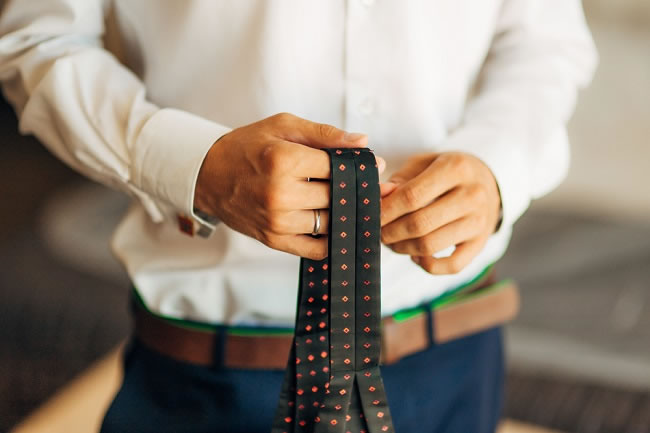1
HOME > Tips & Advice >
HOW TO TIE THE 3 KNOTS YOU NEED TO KNOW
THE NECKTIE IS ONE OF THE MOST IMPORTANT ACCESSORIES IN MENSWEAR
Written by Rakelle Maurici in Tips & Advice on the 30th March 2016

One the most important accessories in menswear is certainly the neck tie. I’m sure you’ve often wondered why men wear them and how it first started. Here’s an explanation which is believed to be the story behind them. During the war in France in the 18th Century, King Louis XIII asked his Croatian soldiers to wear neckties; which in turn he ended up loving the way in which they looked - so he asked for them to be mandatory at any Royal occasion. These have since always been popular across Europe and have evolved in many ways of the years.
The tie from 1910 to 1919 most resembles the tie in which we see today, because it was during this era in which men’s style became less formal, and clothing was also more about comfort and functionality. When it comes to dressing your suit with a tie, it’s not as simple as just picking out the colours and fabrics that you like the most - you need to think about sizing too. You don’t want the tie length to be too long, too short, too skinny or too wide. There are some small minor tips which will make a major difference in making your entire outfit sharper and sleeker.

The colour choices and matching with your shirt are entirely down to your personal preferences. We did cover this in a previous article if you need help on colour matching; however this article is about the fit and the knot. If someone tells you there are 22 ways in which you can tie a tie then yes there are, however keep things simple - simplicity is the best form of sartorial dressing. Stick to these three ways of tying a tie for nonchalant style.
Double Windsor Tie Knot
This is smartest and sharpest way in which you can wear a tie. To start, always hold the wider side in your right hand, hanging longer and the slimmer side in your left hand. This kind of tie is wrapped around twice before securing the knot which is what makes it fuller. Once you’ve made the knot and if you want to make it smaller, pull on the narrow end and vice versa if you want the knot to be fuller. This kind of tie knot suits someone with an angular face and complements a cutaway collar shirt as this will counteract any rectangular, long features from your face. Also those with an oval face can wear this knot with a button-down collar shirt as an oval face is in fact the easiest when it comes to wearing a tie in general.

Half Windsor Tie Knot
Just like the double Windsor tie knot this is less full as you only wrap it around once. It’s less formal and also quicker to achieve which benefits the busy man. Before starting, hold the wider side longer in your right hand again, however with less length than the double Windsor otherwise each end of the tie will be sat at different lengths when you’re finished. This type of tie know can also be worn for the same face shapes in the aforementioned Double Windsor tie knot.

Four in Hand Tie Knot
This is the easiest way to tie a tie and is probably the first knot you learned to at primary school - the simple over and under loop and pull up to fasten. This is the best tie style for those with a round face teamed with a turn down or button-down collar because it will counteract the shape and make your face more angular.

The length on any of these tie knots is really important because a tie can be observed as both too long and too short, which equally doesn’t look great. Remember to keep the tie just above your belt buckle as a rule. However, you can break the rules and take style tips from sartorial icons and follow the sprezzatura trend of wearing the slimmer side slightly longer.

Trending
2
3
4
5
6
7
8
9
10











